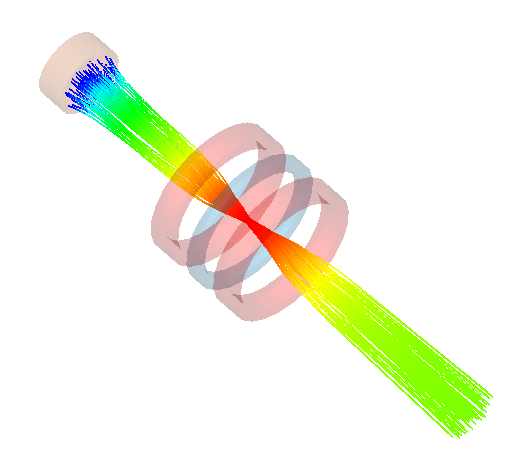


This example demonstrates how an ordinary particle tracking simulation can be performed. Two types of field results are used here - an electrostatic field to accelerate the source electrons being emitted from a cathode and a magnetostatic field that is caused by a Helmholtz coil in order to focus the electron beam.
The cathode is generated with the rotate tool. The anode consists of a cylinder with an inner radius. The geometric properties of the coils are created with curves (the second coil is created with a copy transformation from the first coil).
For the electrostatic calculation the cathode is assigned to a potential value of -1000 V, while the anode gets a potential of 1000 V. The Helmholtz coils are both driven by a current of 0.4 A and each contains 1000 turns. You might have noticed that cathode and anode are perfect electric conductors (PEC), which are only regarded in the electrostatic solver but not in the magnetostatic simulation.
After electrostatic and magnetostatic calculations have finished, the particle tracking solver starts its calculation using all available field results with a weighting factor of "1.0". One might also decrease or increase the field strength of a particular field by assigning a different weighting factor.